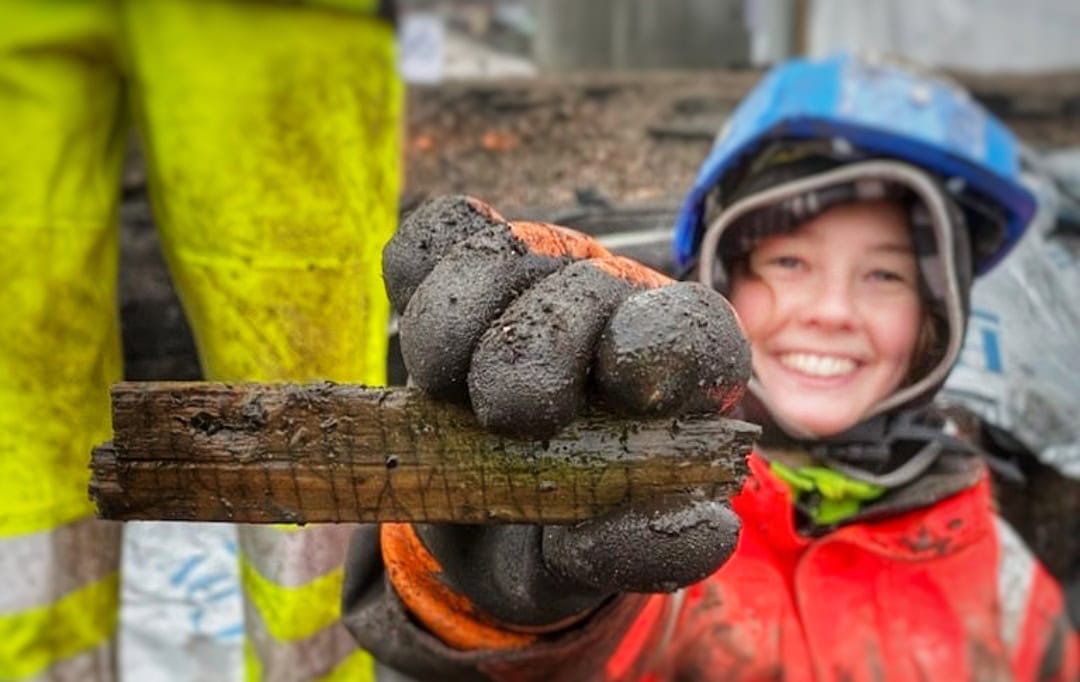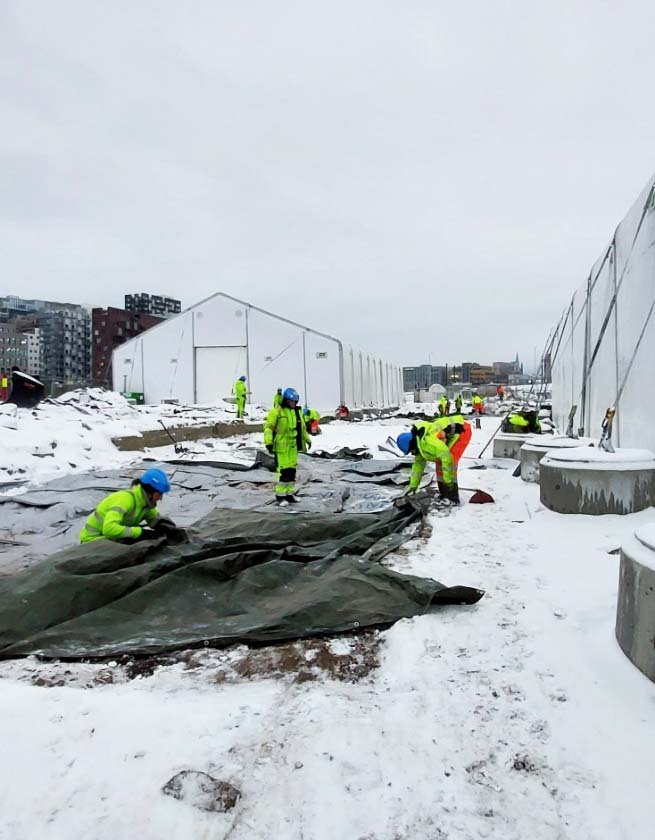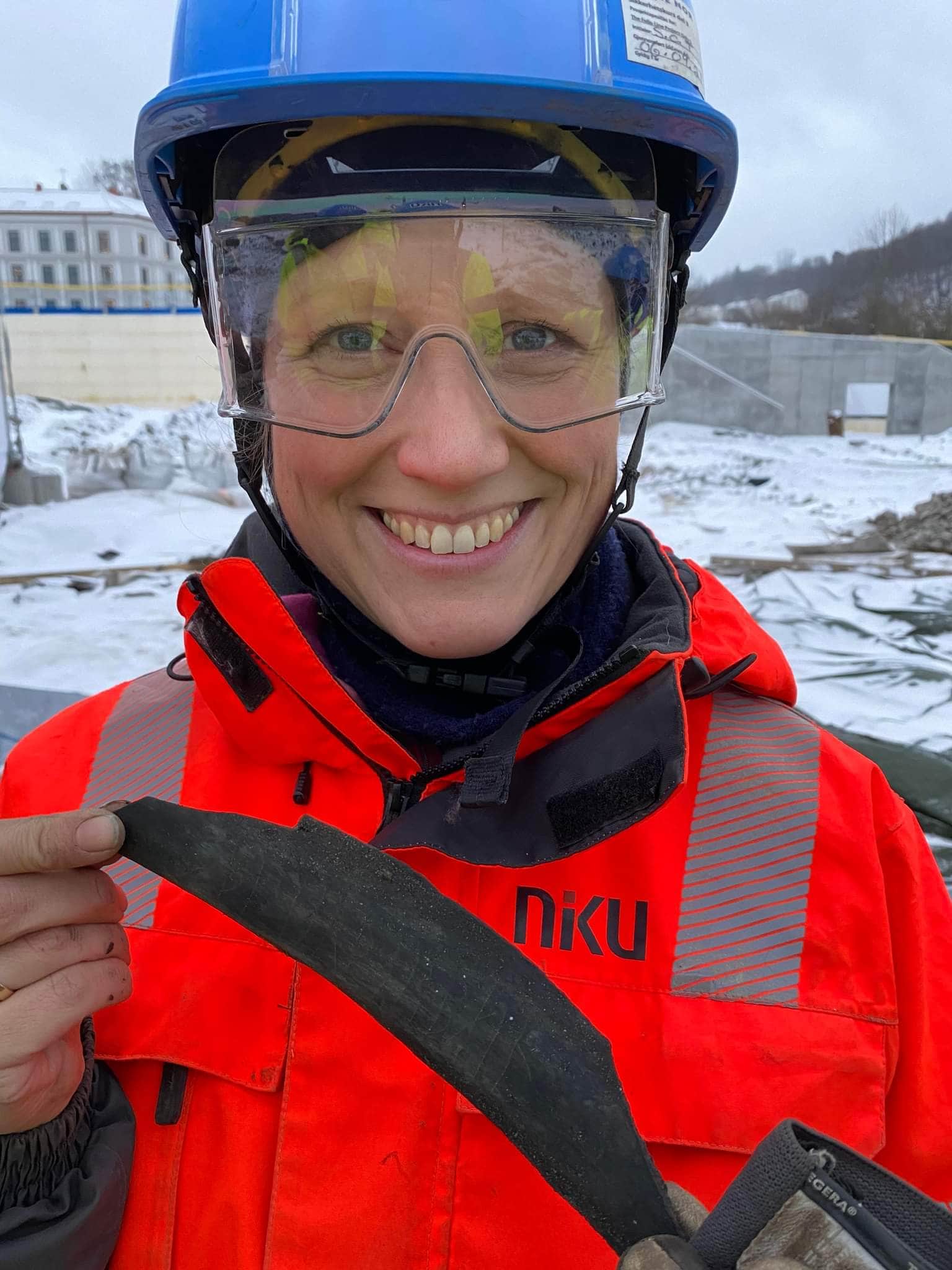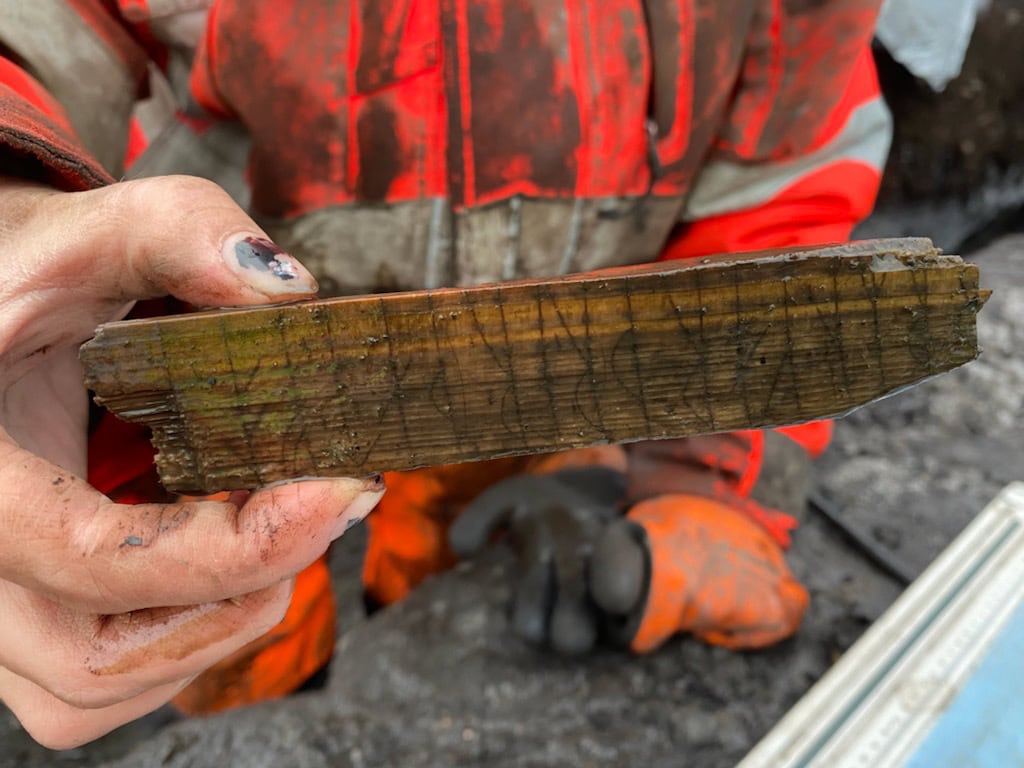
Rare rune finds in Oslo
In the last week before Christmas two runic inscriptions were unearthed during excavations in Oslo’s old town. One inscription is carved on bone and this is the first bone with runes found in Oslo in more than forty years. The second is carved on wood and contains a religious text in both Norse and Latin.
The two runic inscriptions appeared shortly after the discovery of a decorated knife handle depicting what is possibly Scandinavia’s earliest known visual representation of falconry.
Interpreting runic inscriptions is not always a straightforward task. Inscriptions may be incomplete, and the reason for inscribing a particular text remains for the most part unknown.
Kristel Zilmer, professor of written culture (runology) and iconography at the University of Oslo, has looked at both inscriptions and produced an initial interpretation.
The Medieval Park project
The archaeological excavations in Oslo’s Medieval Park are part of the Follo Line railway project carried out by Bane NOR.
NIKU will execute the archaeological investigations in 2021-2022.


First bone with runic inscription found in Oslo in more than forty years
-The first find is a piece of bone with thirteen runes on one side and a single rune on the other. The main inscription reads basmarþærbæin which can either relate to the name of a person who owned (i.e. used) the bone or can describe the type of bone, she says.
-The last four runes bæin (Old Norse bein which means “bone”) refer to the bone itself. But our understanding of the whole text depends on how we interpret the first part of the inscription, Zilmer informs.


– ”basmarþær” may contain the genitive form Marðar, which can be explained as the Scandinavian personal name Mår / Mård. To this, one has added the name element ”bas”. ”Bas” as the first element in names is unusual. However, something similar can be found in a gravestone inscription from Skålvoll, as a spelling for Báts, genitive of the nickname Bátr, i.e. boat. If this is the case, then the text can mean ”Boat-Mård’s bone”.
The reason for writing on the bone was not necessarily to show ownership of it, but maybe Mård sat there with free time after eating a meal, and used the opportunity to turn the leftover dinner into a writing tablet?
The other possible interpretation is the slightly peculiar word composition bás-marðarbein, meaning ”boose(barn)goat’s bone”.
–Mǫrðr occurs in Old Norse as a peculiar poetic label for ram*. The bone does not appear to be a sheep bone, but rather from a horse or a cow. Is the misleading inscription meant to entertain? Zilmer wonders.
Short runic texts on bones have been found in other Norwegian and Scandinavian medieval towns, but this is the first found in Oslo in more than forty years.
Runes carved in wood containing religious text in Norse and Latin
The second find is a flat piece of wood with inscription on three of its sides. The object is slightly damaged, but it is possible to see that the text combines religious texts in both Latin and Old Norse.

– On one side, we notice two words in Latin: manus and Domine or Domini. Manus means “hand” and Dominus “lord, God”. This is part of a well-known Latin prayer formula: In manus tuas, Domine, commendo spiritum meum (“Into your hands, O Lord, I commend my spirit”), known as Jesus’ last words on the cross, says Zilmer.
The Old Norse text on the second side includes the name Bryngærðr. On the third (narrow) side eight small runes can make sense either as a statement in Latin or a continuation of the text in Old Norse. In the latter case, this may be the phrase “it is true”.
A possible interpretation is that the inscription contains a short prayer telling the reader about Bryngærðr who commended herself into the hands of God.


Similar phrases are found in some church inscriptions from Norway and Gotland. The most interesting example is from Urnes stave church in Norway where the runic inscription in Old Norse says: « May the holy Lord hold (His) hand over Brynjulfr’s spirit. May it be true. ». This message is very reminiscent of the text carved onto the wooden object.
The runic inscriptions bring us closer to medieval Oslo’s inhabitants
-Both finds were from refuse layers, possibly related to land reclamation in areas subject to flooding. The bone may relate to the earliest period of settlement as it was found close to the natural deposits, says Mark Oldham, project leader of the excavation.
-We cannot yet say exactly how old these two rune finds are, but scientific tests will hopefully provide the answers, Oldham continues.
Similar runic finds in Norway date to the period 1100-1350, while some are older. It may be possible however, to date the texts by examining the spelling and use of certain characters.
– The use of so-called dotted runes on the wooden stick, as well as the distinction between a-rune and æ-rune on the bone are characteristic features of medieval runes, Zilmer says.
We already know of 85 loose objects with runic inscriptions from medieval Oslo. In comparison, more than 680 similar discoveries have been made in Bergen. The vast majority of rune finds have been made in connection with archaeological excavations, and in Oslo most of the known runic artefacts were found during the 1970s and 80s.
The bone and the wooden fragment represent two main categories of rune-inscribed objects from medieval Norwegian towns. Each new find is unique and important in its own right and helps bring us closer to the deeds and words of medieval people.
_________________________________________________________
*The most common meaning of the word mǫrðr is the European pine marten, a predator native to and widespread in Northern Europe.

